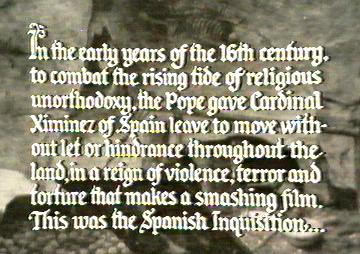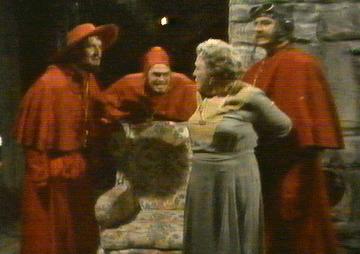Posted on 12/22/2005 6:08:34 PM PST by wagglebee
Few people ever knew, but the murky medieval alleyways of this Atlantic port city once provided cover for a persecuted minority that risked being burnt at the stake.
In the 16th century, an unremarkable thick-walled granite house that still stands in a row of narrow, small-roomed buildings along a cobbled street held a dangerous secret. At the back of the house, steep steps lead down to a warren of alleys ideal for conspiratorial comings and goings that helped keep an outlawed religious ceremony hidden.
Four centuries later, the secret of the clandestine synagogue is out.
The mystery began unraveling when Father Agostinho Jardim Moreira, a Roman Catholic priest, bought the four-story house for use as an old people's home for his parish. When workers told him they had come across a false wall, he immediately instructed them to pull it down _ sensing there was a discovery to be made.
He had studied the city's Jewish history and knew his parish had been an officially designated Jewish quarter in the 15th and 16th centuries. He also knew that after they were forced to convert to Catholicism in 1496, many Jews privately kept their faith and worshipped in secret.
"I suspected that false wall was hiding something," said Jardim Moreira. "I knew there had to be some kind of Jewish symbol behind it"
A construction worker's sledgehammer proved his hunch right.
Beyond the false wall was a room containing a medieval holy ark - a nook in the wall of a synagogue where Torah scrolls are kept. Only two other arks from the period have been found in Portugal.
After corroboration by medieval experts, the Portuguese Institute of Architectural Heritage last month authenticated the house as the site of a secret synagogue.
The chance discovery solved an enigma that had baffled historians for years, said Elvira Mea, a lecturer at the University of Porto who specializes in Jewish history.
Immanuel Aboab, a Jewish scholar born in Porto in mid-16th century, had written that as a child he had visited a synagogue in the third house along the street counting down from the 14th-century Our Lady of Victory church.
But he didn't specify which side of the street, and archaeological digs had turned up nothing. Then came confirmation of the accuracy of Aboab's text: The house Moreira bought was the third house down on the very street the Jewish scholar had described.
Historians had been thrown off by the fact that Aboab never described the synagogue as a clandestine one. His childhood experiences took place five decades after the forced conversion - at a time when secret Jewish worshippers would be tortured and burned at the stake if caught - so there was no chance a synagogue could function out in the open.
"Everyone assumed Aboab had got his dates mixed up," said Mea. "But it had been preying on my mind and as soon as I saw the ark, all the pieces fell into place. I was so happy I could hardly believe it."
The secret synagogue dates from a convulsive period in the Jewish history of the Iberian peninsula.
When in 1492 neighboring Spain expelled all Jews who refused to convert to Catholicism, some 60,000 Jews poured across the border into Portugal.
Their community flourished here. It was the Age of Expansion, when Portuguese seafarers reached previously unknown lands in South America, as well as Africa and Asia. Jewish merchants in Porto built fortunes on the trade in sugar from Brazil, then a Portuguese colony, which was shipped to Portugal and sold onwards to northern Europe at a handsome profit.
Socially, though, the Jews were kept at arm's length. The designated Jewish quarter was marked off and subject to a curfew, and the law stated a Christian woman entering there had to be chaperoned by at least two men.
Then came the crackdown. Portugal's King Manuel I - hoping to seal a royal alliance with Spain's powerful rulers, Ferdinand and Isabella, by marrying their daughter - forced all Jews in his country to convert.
Some fled, but those who stayed were subjected to humiliating public baptisms. They were designated "New Christians" or "Marranos," Iberian slang for pigs. Even then, they remained at risk from religious persecution. In 1506, some 3,000 Jews were massacred in Lisbon.
The royal edict forced the Jewish faith underground, while publicly Jews performed Catholic rituals.
The ark is a carved granite repository, about 1.5 meters (5 feet) tall and arched at the top. Like most arks, it faces east - towards Jerusalem.
Experts have dated the broken pieces of decorative green tiles in the ark to the 16th century because marks reveal they were glazed using methods particular to the period.
Jardim Moreira, 64, says he intends to place a glass screen over the ark for protection while authorities decide how it can be exhibited.
The Israeli Ambassador to Portugal, Aaron Ram, is involved in efforts to preserve the ark.
"It's quite exciting. You feel part of history when you see it," Ram said. "It's a very important site. ... We all have to remember our history so we can be prepared for the future."
Ping!
GGG Ping.
Fascinating!
Hope they let the public see it.

---------------------------
Truly, God watches over the believers.
They are an amazing testament to faith.
What are you expecting? The Spanish Inquisition?


And the house remained standing for so long!
Rummy did it he is old as dirt LOL!
Wow, it's like "National Treasure."
Please FREEPMAIL me if you want on or off the
"Gods, Graves, Glyphs" PING list or GGG weekly digest
-- Archaeology/Anthropology/Ancient Cultures/Artifacts/Antiquities, etc.
Gods, Graves, Glyphs (alpha order)
The Golem was in Prague, not Porto!
NO ONE EXPECTS THE SPANISH INQUISITION !
Disclaimer: Opinions posted on Free Republic are those of the individual posters and do not necessarily represent the opinion of Free Republic or its management. All materials posted herein are protected by copyright law and the exemption for fair use of copyrighted works.